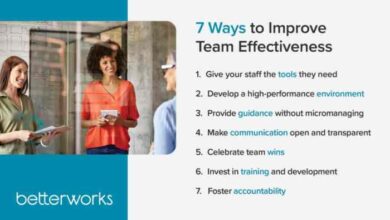
Chief of Staff vs HR Director: navigating the nuances of these crucial roles. Each plays a vital part in organizational success, but their responsibilities, reporting structures, and strategic impact differ significantly. Understanding these distinctions is key for both aspiring professionals and established leaders.
This comparison explores the distinct duties, skills, and influence of Chief of Staff and HR Director roles. From defining their responsibilities to examining their organizational alignment, we delve into the heart of what makes these roles unique and impactful.
Defining Roles and Responsibilities
The Chief of Staff and the HR Director, while both vital to organizational success, play distinct roles. Understanding these differences is crucial for effective team building and delegation of responsibilities. Both positions demand strong leadership, communication, and organizational skills, but the focus and scope of their responsibilities differ significantly.
Chief of Staff Responsibilities
The Chief of Staff acts as a critical liaison between the executive leadership and the rest of the organization. They are often the central point of contact for various projects and initiatives, ensuring smooth workflow and efficient execution. Their responsibilities typically include:
- Strategic Planning and Implementation: The Chief of Staff assists in developing and implementing strategic plans by gathering information, analyzing data, and identifying potential roadblocks. They work closely with leadership to ensure alignment with the overall organizational goals.
- Project Management: Managing multiple projects simultaneously, including scheduling, resource allocation, and monitoring progress. This often involves coordinating with various departments and stakeholders.
- Communication and Coordination: Facilitating communication and collaboration across different teams. They ensure information flows efficiently and effectively, reducing delays and misunderstandings.
- Executive Support: Providing administrative and logistical support to the executive team, managing calendars, scheduling meetings, and preparing reports.
- Problem Solving and Decision Support: Identifying potential issues, researching solutions, and providing recommendations to leadership.
HR Director Responsibilities
The HR Director is responsible for the overall human resources function within an organization. Their focus is on employee relations, talent management, and compliance with legal regulations. Their key responsibilities include:
- Recruitment and Selection: Developing strategies for attracting and recruiting qualified candidates, managing the hiring process, and ensuring a positive candidate experience.
- Compensation and Benefits Administration: Managing salary structures, benefits packages, and ensuring compliance with labor laws.
- Employee Relations and Training: Addressing employee concerns, conducting performance reviews, and developing training programs to enhance employee skills and knowledge.
- Policy and Procedure Development: Creating and maintaining policies and procedures related to employee conduct, compensation, and benefits.
- Compliance: Ensuring the organization complies with all applicable employment laws and regulations.
Key Differences
The Chief of Staff is primarily focused on strategic initiatives and operational efficiency, while the HR Director’s focus is on the people aspect of the organization. The Chief of Staff bridges the gap between leadership and the organization, whereas the HR Director manages the internal relationships and policies impacting employees. The Chief of Staff often works across departments, whereas the HR Director focuses on internal processes and employee relations.
Comparison Table
| Function | Chief of Staff | HR Director |
|---|---|---|
| Strategic Planning | Develops and implements strategic plans | Manages policies impacting employee relations |
| Project Management | Manages projects and initiatives | Manages employee relations and compliance |
| Communication | Facilitates communication across teams | Facilitates communication regarding employee concerns and policies |
| Executive Support | Provides administrative support to executives | Manages compensation, benefits, and training |
| Employee Relations | Supports employee relations indirectly | Manages employee relations directly |
Organizational Alignment and Reporting Structures

Understanding the reporting structures of the Chief of Staff and HR Director is crucial for effective organizational functioning. These roles, while distinct, often interact within the overall organizational hierarchy, influencing how initiatives are prioritized and resources are allocated. This section delves into the typical placement of these roles within the hierarchy and examines the key differences in their reporting lines.The alignment of these roles within the organizational structure significantly impacts their influence and the effectiveness of their respective responsibilities.
Different reporting structures can empower or limit the ability of both the Chief of Staff and HR Director to effectively contribute to organizational goals.
Chief of Staff Reporting Structure
The Chief of Staff typically reports directly to the CEO or a senior executive, such as the President or COO. This direct reporting line grants the Chief of Staff a pivotal position within the organization. They are often entrusted with coordinating and overseeing critical initiatives, ensuring alignment across various departments. This proximity to leadership enables the Chief of Staff to effectively communicate strategic priorities and facilitate collaboration.
HR Director Reporting Structure
The HR Director, typically reports to the Chief Operating Officer (COO), Chief Human Resources Officer (CHRO), or the President. The specific reporting line may vary depending on the size and structure of the organization. In smaller organizations, the HR Director might report directly to the CEO. This reporting structure places the HR Director in a position to support the organization’s strategic objectives through effective talent management and HR operations.
Comparing and Contrasting Reporting Structures
While both roles are vital to organizational success, their reporting lines differ significantly. The Chief of Staff often sits at a higher level, providing strategic oversight and coordination. The HR Director, on the other hand, typically focuses on operational HR functions and employee-related matters.
| Role | Reporting to | Key Responsibilities |
|---|---|---|
| Chief of Staff | CEO, President, or COO | Strategic coordination, initiative oversight, communication, executive support |
| HR Director | COO, CHRO, President, or CEO (in smaller organizations) | Talent management, employee relations, HR operations, compliance |
Examples of Organizational Charts
Illustrative organizational charts are not provided as requested. Instead, a conceptual example is presented:A typical organizational chart would show the Chief of Staff reporting directly to the CEO, situated at the top of the hierarchy. The HR Director would report to the COO, or the CHRO if one exists. In some instances, the HR Director could report directly to the CEO, particularly in smaller organizations.
This arrangement reflects the different levels of influence and the specific responsibilities of each role. Note that organizational structures vary considerably, and these are simplified examples.
Key Skills and Qualifications
The Chief of Staff and HR Director, despite their distinct responsibilities, share a crucial overlap in essential skills. Both roles demand exceptional communication, leadership, and strategic thinking abilities. Understanding these shared and unique skill sets is vital for effective recruitment and team building. This section delves into the specific qualifications for each position, highlighting the synergies and differences.Effective leadership and communication are crucial for both roles, but the specific application and focus differ.
The Chief of Staff needs strong analytical and problem-solving skills to support executive decision-making, while the HR Director requires a deep understanding of labor laws and employee relations to foster a positive work environment.
Essential Skills for a Chief of Staff
A successful Chief of Staff requires a multifaceted skill set. Strong communication skills, including written and verbal proficiency, are paramount for conveying information clearly and concisely. The ability to synthesize complex information and present it in a digestible format is critical for supporting executive decision-making. Furthermore, a Chief of Staff needs to be an effective listener, ensuring they understand the concerns and priorities of the leadership team.
Excellent organizational and time management skills are essential for prioritizing tasks, meeting deadlines, and managing multiple projects simultaneously. Analytical and problem-solving skills are crucial to identify and address issues proactively. Finally, the ability to build and maintain strong relationships across different departments is essential to facilitate collaboration and ensure smooth operations.
Essential Skills for an HR Director
The HR Director requires a comprehensive understanding of human resources principles and best practices. This includes knowledge of labor laws, employment regulations, and compensation and benefits administration. Strong communication skills, both written and verbal, are vital for effective communication with employees, managers, and external stakeholders. Empathy and interpersonal skills are crucial for building strong relationships with employees and addressing their concerns.
Strategic thinking is essential to align HR strategies with business objectives and develop innovative solutions to address employee relations issues. Moreover, strong leadership and negotiation skills are necessary to mediate conflicts, resolve disputes, and manage change effectively.
Figuring out the precise differences between a chief of staff and an HR director can be tricky. While both roles impact organizational structure and efficiency, the chief of staff often focuses on strategic initiatives and operational support, whereas the HR director manages employee relations and policies. Interestingly, the recent Wikileaks release on Stratfor’s activities, as seen in Wikileaks splays Stratfor wide open , highlights the importance of understanding these distinctions in a global context.
Ultimately, understanding the nuances of these roles is crucial for any organization navigating complex situations, whether internal or external.
Overlapping and Distinct Skill Sets
While both roles require strong communication and leadership skills, the application differs significantly. The Chief of Staff focuses on strategic planning, execution, and support of senior leadership, while the HR Director focuses on employee relations, compliance, and fostering a positive work environment. The Chief of Staff needs excellent analytical and problem-solving skills, whereas the HR Director needs in-depth knowledge of employment law and HR best practices.
Understanding these nuances is crucial for hiring the right individuals for each role.
Skills Comparison Table
| Skill Category | Chief of Staff | HR Director |
|---|---|---|
| Communication | Exceptional written and verbal communication, ability to synthesize complex information, active listening | Excellent written and verbal communication, ability to communicate complex HR policies clearly, interpersonal skills |
| Leadership | Strong leadership skills, ability to influence and motivate others, decision-making skills | Leadership in employee relations, negotiation skills, conflict resolution |
| Technical | Proficiency in relevant software, project management tools, data analysis | Proficiency in HRIS systems, compensation and benefits software, knowledge of employment law |
| Strategic Thinking | Strategic planning and execution, ability to anticipate future needs, understanding of organizational goals | Strategic alignment of HR with business objectives, development of innovative HR solutions, anticipating future employee needs |
| Problem-Solving | Analytical skills, proactive identification of issues, creative solutions to problems | Problem-solving skills, conflict resolution, mediation skills |
Strategic Impact and Influence
The Chief of Staff and HR Director, while both vital to organizational success, wield their influence in distinct ways. Understanding these differences is key to appreciating the unique contributions each role brings to the strategic landscape. This section delves into the specific areas of strategic impact, highlighting how these leaders shape the organization’s trajectory and the differences in their approaches.The strategic impact of a role hinges on its ability to align operational initiatives with overarching business goals.
This alignment translates into tangible results, from improved efficiency to enhanced employee engagement. Both the Chief of Staff and the HR Director play crucial roles in this alignment, albeit through different lenses.
Chief of Staff Strategic Impact
The Chief of Staff acts as a strategic advisor and operational facilitator, often serving as a crucial link between the executive team and the rest of the organization. Their impact often manifests in streamlining processes, optimizing resource allocation, and ensuring initiatives are executed effectively.
- Operational Efficiency: A Chief of Staff can identify bottlenecks and inefficiencies in workflows, leading to process improvements and cost savings. For example, a Chief of Staff might analyze data to identify areas where redundant tasks are performed, leading to the creation of a standardized operating procedure that reduces wasted time and resources. This directly impacts operational efficiency and ultimately profits.
- Strategic Alignment: By ensuring that projects and initiatives are aligned with the organization’s overall strategy, the Chief of Staff plays a critical role in achieving key objectives. A successful example is a Chief of Staff who helped a technology company align its product development roadmap with market trends, resulting in a 20% increase in revenue within a year.
- Resource Management: A Chief of Staff effectively manages organizational resources, ensuring they are allocated to high-priority projects and initiatives that contribute to the company’s strategic goals. This often involves collaboration with different departments and stakeholders.
HR Director Strategic Impact
The HR Director, conversely, focuses on shaping the organization’s talent pipeline and culture. Their impact is profound, impacting employee engagement, retention, and ultimately, the organization’s ability to attract and retain top talent.
- Talent Acquisition and Development: An HR Director strategically designs recruitment strategies, ensuring the organization attracts top talent aligned with its values and long-term goals. A successful HR Director might implement a new onboarding program that significantly reduces employee turnover in their first year, leading to substantial cost savings.
- Culture Building: An HR Director cultivates a positive and productive work environment that fosters employee engagement and loyalty. This involves developing employee recognition programs, fostering a sense of community, and providing opportunities for professional growth. A successful HR Director implemented a feedback mechanism that resulted in a 15% increase in employee satisfaction within six months.
- Employee Relations: The HR Director actively manages employee relations, mediating conflicts, resolving disputes, and ensuring fair and equitable treatment of all employees. This proactive approach can prevent costly legal issues and ensure a harmonious work environment.
Impact Differences
The Chief of Staff’s impact is primarily focused on operational efficiency and strategic alignment, while the HR Director’s impact is more focused on the people aspect, creating a positive and productive work environment. This distinction is critical in understanding how each role contributes to overall organizational success. Their different focuses result in different outcomes, but both are vital components of a well-functioning organization.
Thinking about the differences between a chief of staff and an HR director? It’s a fascinating comparison, especially when considering the potential impact of innovative energy solutions like Bloom Energy’s mini power plant technology. Are these smaller power plants truly a revolution, or just hot air? The answer, as you’ll discover in this insightful piece on Bloom Energy’s mini power plant revolution or hot air , depends on careful consideration of the practical implications.
Ultimately, the chief of staff and HR director roles, despite their differences, both need to adapt to new technologies and their impact on the workplace.
Decision-Making Authority and Influence
The balance of power between a Chief of Staff and an HR Director significantly impacts an organization’s efficiency and effectiveness. Understanding their respective decision-making authorities is crucial for establishing clear lines of communication and avoiding conflict. This section delves into the typical decision-making scope of each role and how organizational structure influences these boundaries.The decision-making landscape is not static; it’s dynamic and often shaped by the specific organizational structure and prevailing culture.
Formal reporting structures, coupled with the overall company culture, dictate the degree of influence each role holds. A highly centralized organization might grant the Chief of Staff broader authority compared to a more decentralized one.
Chief of Staff Decision-Making Authority
The Chief of Staff typically acts as a strategic advisor and facilitator, possessing significant influence over the executive team’s agenda and priorities. They frequently participate in high-level decision-making processes, offering insights and recommendations. Their authority often extends to coordinating projects, streamlining workflows, and managing the executive team’s calendar.
HR Director Decision-Making Authority
The HR Director is responsible for developing and implementing policies related to employee relations, compensation, and benefits. This includes decision-making regarding recruitment, training, and performance management. Their authority often focuses on operational HR functions, ensuring compliance with relevant regulations.
Organizational Structure’s Impact on Decision-Making
Organizational structure plays a vital role in defining the boundaries of decision-making authority. In a matrix structure, where employees report to multiple managers, decision-making might involve collaboration between the Chief of Staff and the HR Director, particularly when addressing issues impacting both strategic goals and employee well-being.
Examples of Key Decisions
| Role | Decision Area | Example |
|---|---|---|
| Chief of Staff | Strategic Planning | Recommending a new organizational structure to improve efficiency and align with future market trends. |
| Chief of Staff | Resource Allocation | Prioritizing projects based on their strategic impact and available resources. |
| HR Director | Compensation and Benefits | Developing a new compensation structure to attract and retain top talent, considering industry benchmarks. |
| HR Director | Employee Relations | Mediating a conflict between two employees to prevent escalation and maintain a positive work environment. |
Variations in Decision-Making Authority
The specific level of decision-making authority for each role can vary greatly depending on the company’s size, industry, and culture. In smaller companies, the Chief of Staff might have more direct involvement in day-to-day operations, while in larger organizations, their role might be more focused on strategic initiatives. Similarly, the HR Director’s influence might vary based on the company’s HR department size and the overall organizational hierarchy.
Collaboration and Interactions with Other Teams

The Chief of Staff and HR Director are crucial to an organization’s success, and their interactions with other departments are vital for effective workflow and strategic alignment. Understanding these interactions reveals how these roles support and influence various teams, enabling them to achieve organizational goals. Both roles necessitate strong communication and collaboration skills to foster smooth operations and achieve desired outcomes.
Figuring out the differences between a chief of staff and an HR director can be tricky, especially when you’re juggling multiple responsibilities. The sheer amount of tasks involved in both roles can make it feel like a constant balancing act, like trying to navigate the complexities of life, work, and online study simultaneously. This is particularly relevant for those exploring career paths while managing the demands of online learning, as highlighted in this insightful piece on juggling acts balancing life work and online study.
Ultimately, the key distinction lies in their core focus: a chief of staff typically manages executive operations, while an HR director focuses on employee relations and well-being.
Typical Interactions of a Chief of Staff, Chief of staff vs hr director
The Chief of Staff (COS) acts as a vital liaison between the executive leadership and various operational teams. They are often the primary point of contact for resolving cross-departmental issues, streamlining processes, and ensuring alignment with strategic objectives. Their interactions are multifaceted and often involve:
- Facilitating Communication and Collaboration: The COS actively promotes communication between departments, often organizing meetings, workshops, or project initiatives to bridge gaps and foster collaboration. They act as a central hub for information flow, ensuring that relevant information reaches the right people at the right time.
- Problem-Solving and Issue Resolution: The COS frequently tackles complex issues that span multiple departments. This includes identifying bottlenecks, proposing solutions, and driving the implementation of those solutions to resolve roadblocks and improve operational efficiency.
- Project Management and Coordination: The COS oversees and coordinates projects that require input from various departments. They ensure projects are on track, stay within budget, and meet deadlines. For instance, a new company-wide training initiative would require coordination with IT, HR, and Marketing to schedule and execute effectively.
Typical Interactions of an HR Director
The HR Director (HRD) focuses on the people side of the business, maintaining positive employee relations, ensuring compliance, and fostering a productive work environment. Their interactions often include:
- Employee Relations and Development: The HRD addresses employee concerns, mediates disputes, and implements employee development programs. They collaborate with managers to identify training needs and support initiatives that enhance employee performance.
- Recruitment and Onboarding: The HRD works closely with hiring managers to identify talent needs, develop recruitment strategies, and ensure a smooth onboarding process for new employees. This often involves collaborating with marketing to enhance brand image and attract talent.
- Compensation and Benefits Administration: The HRD manages employee compensation, benefits, and payroll. They work closely with finance and accounting to ensure accuracy and compliance with regulations. Ensuring proper benefits administration requires communication with other departments to maintain consistency and equity.
Comparing and Contrasting Collaborative Nature
The Chief of Staff and HR Director, while both focused on organizational effectiveness, have distinct collaborative roles. The COS focuses on streamlining processes and resolving cross-departmental issues, while the HRD concentrates on employee well-being and organizational compliance. Both roles, however, rely heavily on collaboration across departments to achieve their objectives.
Collaborative Interactions Table
| Department | Chief of Staff | HR Director |
|---|---|---|
| Marketing | Collaborates on campaigns requiring cross-departmental support, like identifying and addressing employee needs related to campaigns, coordinating events, and ensuring alignment with company values. | Works with marketing on recruitment and employer branding initiatives. Ensures employee relations align with marketing strategies and that compensation and benefits support the employer brand. |
| Sales | Supports sales teams with resource allocation, process improvements, and resolving conflicts arising from interdepartmental dependencies. They act as a bridge between sales and other departments, facilitating communication and collaboration. | Works with sales to ensure employee engagement and satisfaction in high-pressure sales environments, provides training programs to improve performance and handle conflict resolution, and ensures proper compensation and benefits align with sales targets. |
| Finance | Facilitates communication between finance and other departments to ensure efficient resource allocation and budgetary compliance. This includes reviewing financial reports and providing insights to the executive team. | Works with finance to ensure compensation and benefits are managed effectively and compliant with legal and financial regulations. Provides input on budgets related to employee training and development. |
Examples of Successful Implementation: Chief Of Staff Vs Hr Director
The Chief of Staff and HR Director are pivotal roles in any organization, impacting efficiency, employee satisfaction, and overall success. Effective implementation of these roles requires careful definition of responsibilities and a strong understanding of how each contributes to the strategic goals of the company. This section showcases fictional case studies highlighting the positive impact of each role and their collaborative contributions to company success.
Case Study 1: Chief of Staff’s Positive Impact
Innovative Solutions, a tech startup, faced significant growth challenges. Their rapid expansion overwhelmed existing operational processes. The Chief of Staff, Anya Sharma, streamlined operations by implementing a centralized project management system. This system tracked progress, allocated resources efficiently, and minimized bottlenecks. She also established key performance indicators (KPIs) and weekly reporting protocols.
This data-driven approach facilitated proactive problem-solving and allowed the company to adapt quickly to evolving market demands. The result was a 25% increase in project completion rates and a 15% reduction in project delays. Anya’s ability to anticipate needs and proactively address issues made her a critical asset to the company’s growth trajectory.
Case Study 2: HR Director’s Positive Impact
Global Solutions, a multinational corporation, faced challenges in maintaining employee engagement and retention across its diverse workforce. The HR Director, David Lee, implemented a comprehensive employee engagement program. This program included regular feedback mechanisms, opportunities for skill development, and recognition initiatives. David also developed tailored training programs to address specific employee needs and created a mentorship program to foster collaboration across departments.
This multifaceted approach fostered a positive work environment, resulting in a 10% reduction in employee turnover and a 20% increase in employee satisfaction scores. David’s proactive and strategic approach directly improved employee morale and productivity.
Comparison of Contributions
Both Anya and David played crucial roles in Innovative Solutions and Global Solutions’ success. Anya’s focus on operational efficiency directly improved project management and resource allocation, leading to quicker time-to-market and reduced costs. David’s focus on employee well-being and development resulted in higher employee engagement and lower turnover rates, reducing recruitment costs and fostering a more productive workforce. Their contributions, while different, were complementary, reinforcing each other to drive overall company success.
Specific Positive Impact
Anya’s strategic approach to project management streamlined processes, resulting in improved efficiency and productivity. Her data-driven decision-making approach ensured that resources were allocated effectively, leading to reduced costs and faster project completion. David’s employee-centric approach to HR initiatives directly boosted employee engagement and retention. His commitment to providing development opportunities and fostering a positive work environment resulted in a more motivated and productive workforce.
Both roles, in their respective capacities, significantly contributed to the growth and sustainability of their organizations.
Last Recap
In conclusion, while both Chief of Staff and HR Director roles are critical to organizational success, their focuses and impacts differ significantly. The Chief of Staff acts as a strategic partner to the executive team, while the HR Director focuses on talent management and organizational culture. Understanding these differences is crucial for effective organizational design and leadership.






